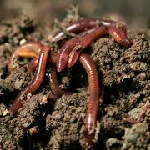Pitch
Traditional methods of waste management are expensive, pollute environment and emit GHGs. Vermicomposting can do this with amazing results.
Description
Summary
We are facing the escalating socio-economic and environmental cost of dealing with current and future generation of mounting municipal solid wastes (MSW). Waste management either by landfill disposal or incineration (to generate electricity) is environmentally highly destructive and economically prohibitive. Construction of engnieered landfills incurs 20-25 million US dollars upfront before the first load of waste is dumped. Further, the landfills have to be monitored for at least 30 years for emissions of toxic and greenhouse gases and toxic leachate. Of greater environmental concern is that landfill emits huge and more powerful greenhouse gases like methane (22 times) and nitrous oxides (312 times) than carbon dioxides and also highly toxic trace gases like toluene and xylene. Incineration emits dangerous dioxins and furans for which WHO has “no safe limits‟ for mankind. A greater part of MSW contains “waste organics‟ which can be composted.
Composting of wastes organics by waste eater earthworms (vermicomposting) is proving to be economically and environmentally preferred technology over the conventional microbial composting technology as it is rapid and nearly odorless process, reducing composting time by more than half and the end product is both “disinfected‟, “detoxified‟ and “highly nutritive” vermicompost (a bio-fertilizer) which is a sustainable alternative to the destructive chemical fertilizers. Emission of GHGs is also significantly low. Sinha et.al. (2010) studied the vermistabilization of sewage sludge (biosolids) by earthworms. Earthworms feed readily upon the sludge components, rapidly convert them into vermicompost, reduce the pathogens to safe levels and ingest the heavy metals. Volume is significantly reduced from 1 cum of wet sludge (80 % moisture) to 0.5 cum of vermicompost (30 % moisture). Earthworms significantly reduced the heavy metals cadmium (Cd) and lead (Pb) from the digested sludge and almost eliminated the pathogens.
Category of the action
Reducing emissions from waste management
What actions do you propose?
Anyone from any country can come forward to work with this method, its sustainable in the context of environmental, social and economic. As part of my work, I have been piloting these activities since 2013. In the course of work, I have established a strong network with municipal waste collection bodies and different industries. I have already done experiment on this and got fantastic results. Now we are on the way to implement it Vermiculture Technologies in different landfill sites and industries.
Have a look into the below links of my experiment and it revealed that Earthworms took less time and degradation rate is higher than other traditional waste management methods.
https://www.dropbox.com/s/0p8dr7m76ic2m92/1ew.jpg
https://www.dropbox.com/s/rljysmxz0hjzely/2ew.jpg
https://www.dropbox.com/s/524jrpnslis2pw7/4ew.jpg
Who will take these actions?
As said earlier, anyone from anywhere can play important role to implement this project, it’s environmentally, economically and socially viable.
Where will these actions be taken?
Anyone from anywhere.
What are other key benefits?
- It is pollution free, environmental friendly
- No hazardous product or byproduct produced
- It is low cost with economically viable
- Do not need big investment
- It is socially viable too
- Even end product can be used for other purposes.
How much will emissions be reduced or sequestered vs. business as usual levels?
Every 1 kg of waste diverted from landfills prevents 1 kg of greenhouse gas emission equivalent to CO2. In 2005, landfill disposal of MSW contributed 17 million tons CO2-e (equivalent) of GHG in Australia, equivalent to the emissions from 4 million cars or 2.6 % of the national GHG emissions. (Australian Greenhouse Office, 2007). Studies have established that vermicomposting of wastes by earthworms significantly reduce the total emissions of greenhouse gases in terms of CO2 equivalent, especially nitrous oxide (N2O) which is 296-310 times more powerful GHG than CO2. Earthworms can play a good part in the strategy of greenhouse gas reduction and mitigation in the disposal of global MSW.(Sinha et al, 2009 b; Chan et al. 2010).
What are the proposal’s costs?
It depends size of projects and implementing sites. In very general, an individual can start this action from home but the cost is very low regardless of any method used.
Time line
If we consider a big industry or a large landfill sites, it just need max. 1 year to implement successfully.
Related proposals
References
Australian Greenhouse Office (2007). National Greenhouse Gas Inventory 2005; Australian Greenhouse Office.
Chan YC, Sinha RK, Wang WJ (2010). Emission of Greenhouse Gases from Home Aerobic Composting, Anaerobic Digestion and Vermicomposting of Household Wastes in Brisbane (Australia). J Waste Manag. Res.
Sinha RK, Agarwal S, Chauhan K, Valani D (2010). The Wonders of Earthworms and its Vermicompost in Farm Production: Charles Darwin‟s „Friends of Farmers‟, With Potential to Replace Destructive Chemical Fertilizers
